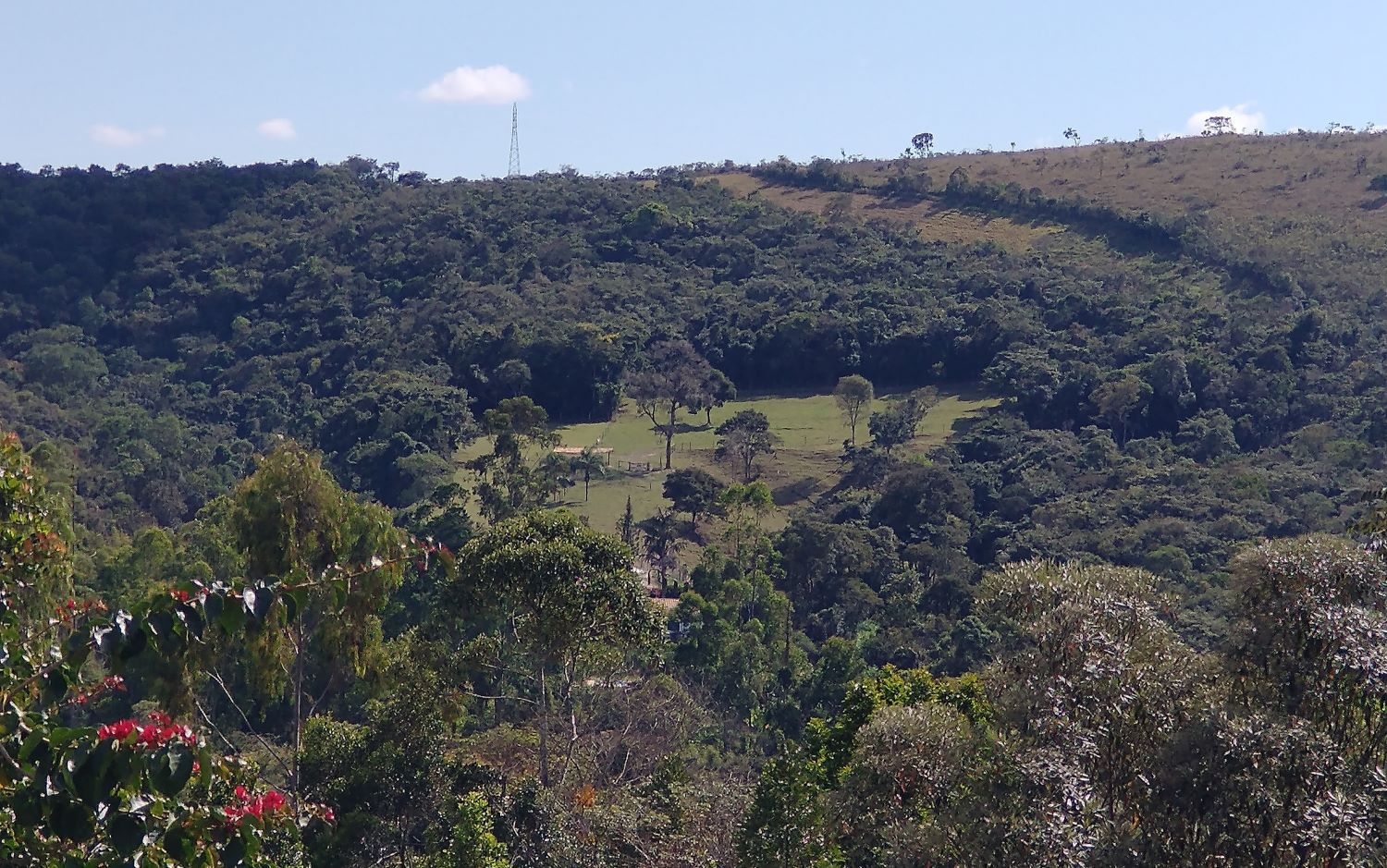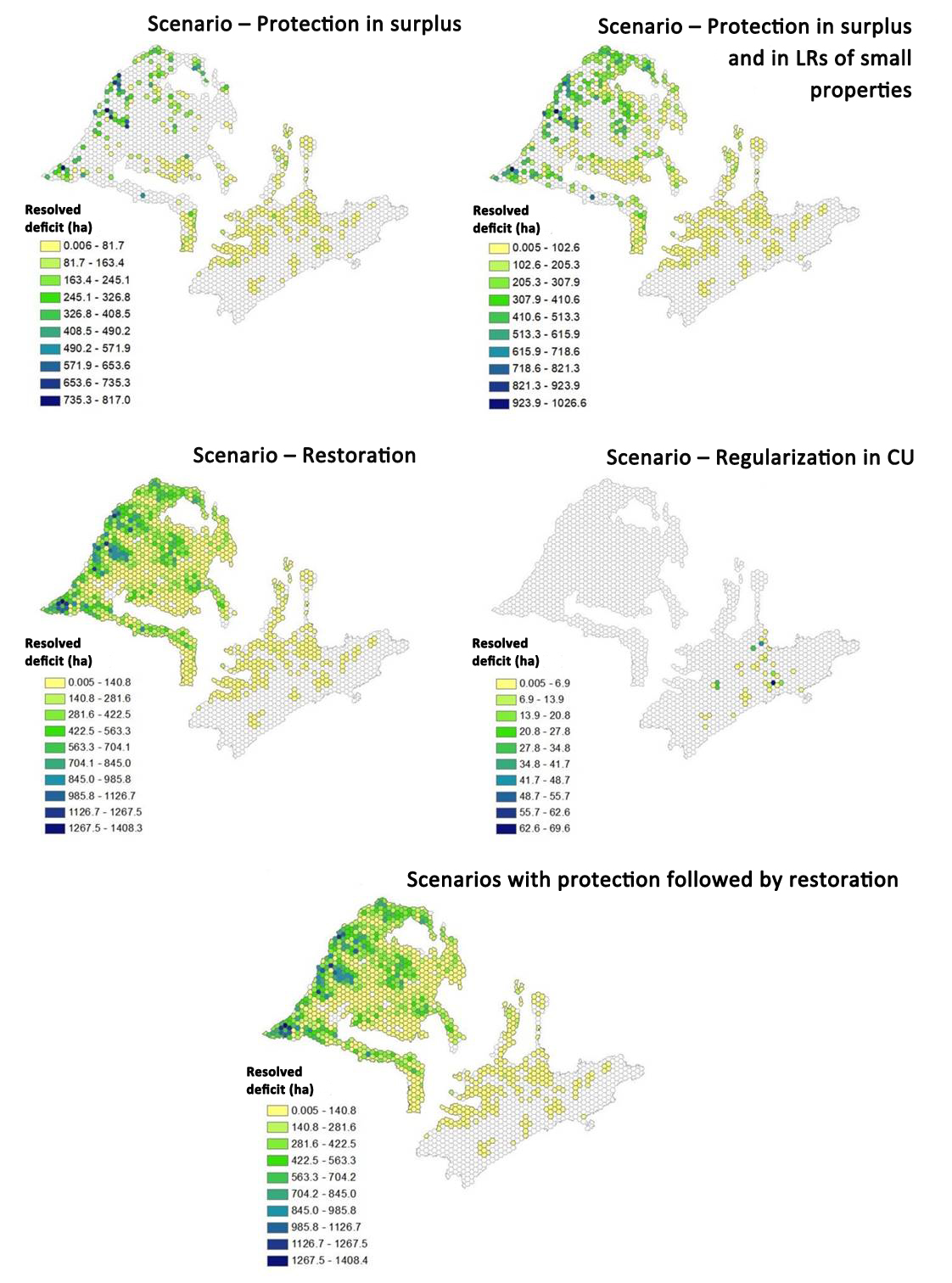

The study system for the tool was the Atlantic Rainforest, one of the world’s most biodiverse and threatened biomes (photo: Clarice Borges-Matos)
Model designed to comply with current legislation uses biodiversity, landscape, and ecosystem services data and could support public policies.
Model designed to comply with current legislation uses biodiversity, landscape, and ecosystem services data and could support public policies.

The study system for the tool was the Atlantic Rainforest, one of the world’s most biodiverse and threatened biomes (photo: Clarice Borges-Matos)
By Luciana Constantino | Agência FAPESP – With successive records of high temperatures around the world and an increase in extreme weather events, the ecological restoration of degraded areas and the new markets associated with it, such as carbon and biodiversity, have gained prominence. In this context, Brazilian researchers have developed a tool to make environmental compensation schemes – a legal obligation to minimize or repair environmental damage caused by human action – more effective.
The new tool, called the Condition Assessment Framework, makes it possible to assess the ecological equivalence of an area to be restored or protected in relation to a degraded area. It considers three important attributes: biodiversity, landscape, and ecosystem services. Designed to meet the legal reserve requirements of the Law for the Protection of Native Vegetation (No. 12,651, enacted by the Brazilian government in 2012), the tool provides more precise compensation. Its study system was the Atlantic Rainforest, one of the most biodiverse and threatened biomes in the world.
It pointed out that combining protection and restoration is the best way to solve the so-called “native vegetation deficits,” guaranteeing environmental and socio-economic benefits. These deficits occur when the forest cover on a property is below the minimum required by law, and is insufficient to maintain functioning ecosystems with biodiversity and balanced water and carbon cycles.
Applying the Condition Assessment Framework revealed that protection followed by restoration solved 99.47% of the deficit in the Atlantic Rainforest biome in the state of São Paulo, with intermediate additionality and cost (USD 1.29 billion). It is worth explaining that, in the environmental context, additionality occurs when the positive results generated, such as reduced emissions, would not have occurred otherwise, i.e. without the specific project being carried out.
When analyzed individually, restoration is the most effective strategy with the highest additionality (98.99% resolution), though it is also the most expensive (USD 2.1 billion). The protection strategies were next, with much lower effectiveness (40.22%) and a much lower value (USD 14.3 million). Land regularization in Conservation Units was the least effective (0.15%) and had the lowest value (USD 104 thousand).
According to the scientists, the model is the first to integrate current equivalence assessment demands using a relatively simple method and spatially explicit data analyzed in Geographic Information Systems (GIS). Its flexibility allows it to be adapted to other biomes and legislation, making it a promising innovation for use in compensation and conservation projects.

Spatial distribution of the Legal Reserve (LR) deficit in hectares (ha) resolved in each hexagon by the compensation strategies applied in the scenarios tested. In the first scenario, the test was of the forest protection strategy that used only the surplus LR. In the second, the protection area was the surplus plus the LRs of small properties (< 4 fiscal modules). In the third and fourth scenarios, the restoration and land regularization strategies in a Conservation Unit (CU) were tested separately. The final scenarios tested forms of protection followed by restoration, which produced very similar results, demonstrating the best cost-benefit ratio for compensating LRs (image: researchers’ archive)
In the future, it could be adapted for biodiversity credits – a new market being formulated that seeks to finance conservation initiatives to protect or restore native species – and for analyzing ecological corridors.
The results of applying the methodology were published in an article in the journal Environmental Impact Assessment Review.
“We did the test in the Atlantic Rainforest, evaluating a region in the interior of the state of São Paulo and another on the coast. We found that the method really does detect environmental differences between areas. Inland, despite being more deforested, it’s possible to find more ecologically equivalent areas than near the coast, where there’s a lot of environmental heterogeneity,” says researcher Clarice Borges-Matos, first author of the article, who at the time was at the Institute of Biosciences of the University of São Paulo (IB-USP) and is currently at USP’s Engineering School (POLI).
Supported by FAPESP through the FAPESP Program for Research on the Characterization, Conservation, Restoration, and Sustainable Use of Biodiversity (BIOTA) and grants (17/26684-4 and 18/22881-2), the study is part of Borges-Matos’ doctoral research under the supervision of Professor Jean Paul Metzger.
Borges-Matos and Metzger also co-signed a previous article in the journal Environmental and Sustainability Indicators in which they describe the methodology.
“The thesis was focused on how to measure ecological equivalence and show the possibility of making a compensation using these criteria. By taking equivalence into account, the areas to be compensated will be similar to those originally devastated, both in terms of biodiversity and ecosystem services. For example, if a forest offered the service of pollination, it must continue to exist in the areas to be compensated. The equivalence must be both in terms of species composition and ecological function,” Metzger explained to Agência FAPESP.
The legislation
The Native Vegetation Protection Law, also known as the new Forest Code, establishes land use and environmental protection rules for private properties, also known as legal reserves. It requires that a portion of rural areas be maintained with native vegetation, without prejudice to the application of rules on Permanent Preservation Areas.
In the nine states that comprise the Legal Amazon, an area designated by the Brazilian government for socio-economic development purposes and covering the territory where the Amazon biome occurs, it is mandatory to maintain 80% vegetation cover on properties located in the forest, 35% in the Cerrado (the Brazilian savannah-like biome), and 20% in general fields – the same percentage as the rest of the country.
Deficits in the extent of the legal reserve must be compensated for by protecting or restoring existing vegetation on another property. The only environmental requirement is that the compensation take place within the same biome as the deficit.
In 2018, the Brazilian judiciary’s highest court, the Federal Supreme Court (STF), ruled on the ecological equivalence of specific species and ecosystems in legal reserve compensation negotiations. Five years later a new judgment established that equivalence should be extended to all forms of compensation under the law. However, this requirement was challenged based on the lack of a definition for measuring ecological equivalence and the levels of equivalence to be sought.
In 2024, the STF (https://portal.stf.jus.br/processos/detalhe.asp?incidente=4961436) upheld the biome as the only compensation mechanism. Using this criterion as the only environmental requirement could lead to compensation being implemented in areas that are very different from those where vegetation has been lost since Brazil’s biomes are very heterogeneous. Furthermore, in some regions, such as São Paulo, it is possible that all or most of the compensated areas will be surplus legal reserves, i.e. existing vegetation with little restoration.
Ecological equivalence is important not only to ensure environments and resources for native animals and plants, but also to protect springs and watercourses, contain erosion, and maintain other ecosystem services, including natural pollination, which is essential for much of agriculture.
“Ecological restoration has been seen as a functional issue, not just an area issue. In the mitigation hierarchy [a scheme used to control the environmental impact of projects], if we can’t avoid the damage, we need to minimize it and compensate for it with a positive impact. In this sense, metrics like these are very useful and can be used in various ways,” adds Metzger, who has studied the subject for years and participated as a lead author of the Intergovernmental Platform on Biodiversity and Ecosystem Services (IPBES).
Brazil recently reaffirmed its commitment to the Paris Agreement’s goal of restoring at least 12 million hectares of forest by 2030 – an area slightly smaller than Greece. In October 2024, Brazil launched the revision of the National Plan for the Recovery of Native Vegetation (PLANAVEG), which establishes guidelines for accelerating and scaling up restoration.
According to MapBiomas, a collaborative network of non-governmental organizations, universities, and technology startups that maps land cover and land use in Brazil, the country had between 11% and 25% of its native vegetation susceptible to degradation between 1986 and 2021. This corresponds to an area ranging from 60.3 million hectares to 135 million hectares. The Amazon, for example, experienced its greatest degradation in the last 15 years alone due to an increase in fires. Unlike deforestation, which involves the complete cutting down of vegetation, degradation involves a gradual loss due to fire, the removal of selected trees, and the effects of climate change.
In practice
When applying the method to the Atlantic Rainforest in São Paulo, the researchers concluded that the regions closest to the coast (in the south of the state) had more positive environmental attributes and greater spatial heterogeneity than inland areas (in the northwest), which exhibited the opposite pattern.
The ecological equivalence attributes were selected based on an analysis of data ranging from the variety of bird, amphibian, and tree species to forest cover and carbon stock. These attributes are entered individually, allowing for multiple analyses. The selected attributes are presented separately to ensure transparency and an understanding of what will be compensated.
Borges-Matos began her thesis by carrying out a literature review of the ecological equivalence metrics used in environmental offsets already developed and proposed up to 2023. The result was published in the journal Environmental Management.
The results of the research are even more important in the year that the United Nations Climate Change Conference (COP30) is being held for the first time in the Amazon, as they can broaden the understanding that integrating ecological equivalence into negotiations brings social, economic, and environmental benefits. As well as conserving biodiversity and restoring lost ecosystem services, they contribute to mitigating and adapting to the effects of climate change, providing benefits to local communities and rural producers, according to the scientists.
The article “Combining protection and restoration strategies enables cost-effective compensation with ecological equivalence in Brazil” can be read at www.sciencedirect.com/science/article/abs/pii/S0195925525001192.
Republish
The Agency FAPESP licenses news via Creative Commons (CC-BY-NC-ND) so that they can be republished free of charge and in a simple way by other digital or printed vehicles. Agência FAPESP must be credited as the source of the content being republished and the name of the reporter (if any) must be attributed. Using the HMTL button below allows compliance with these rules, detailed in Digital Republishing Policy FAPESP.





